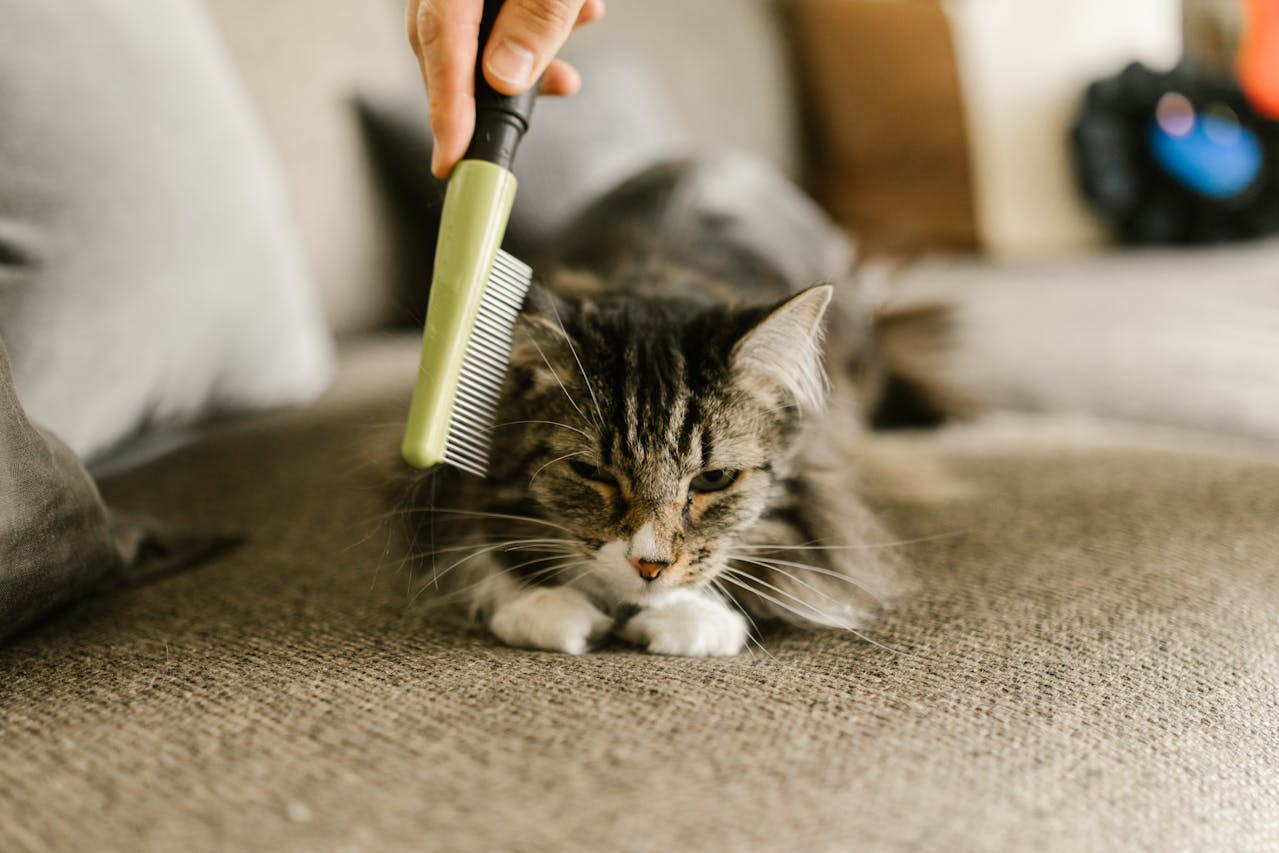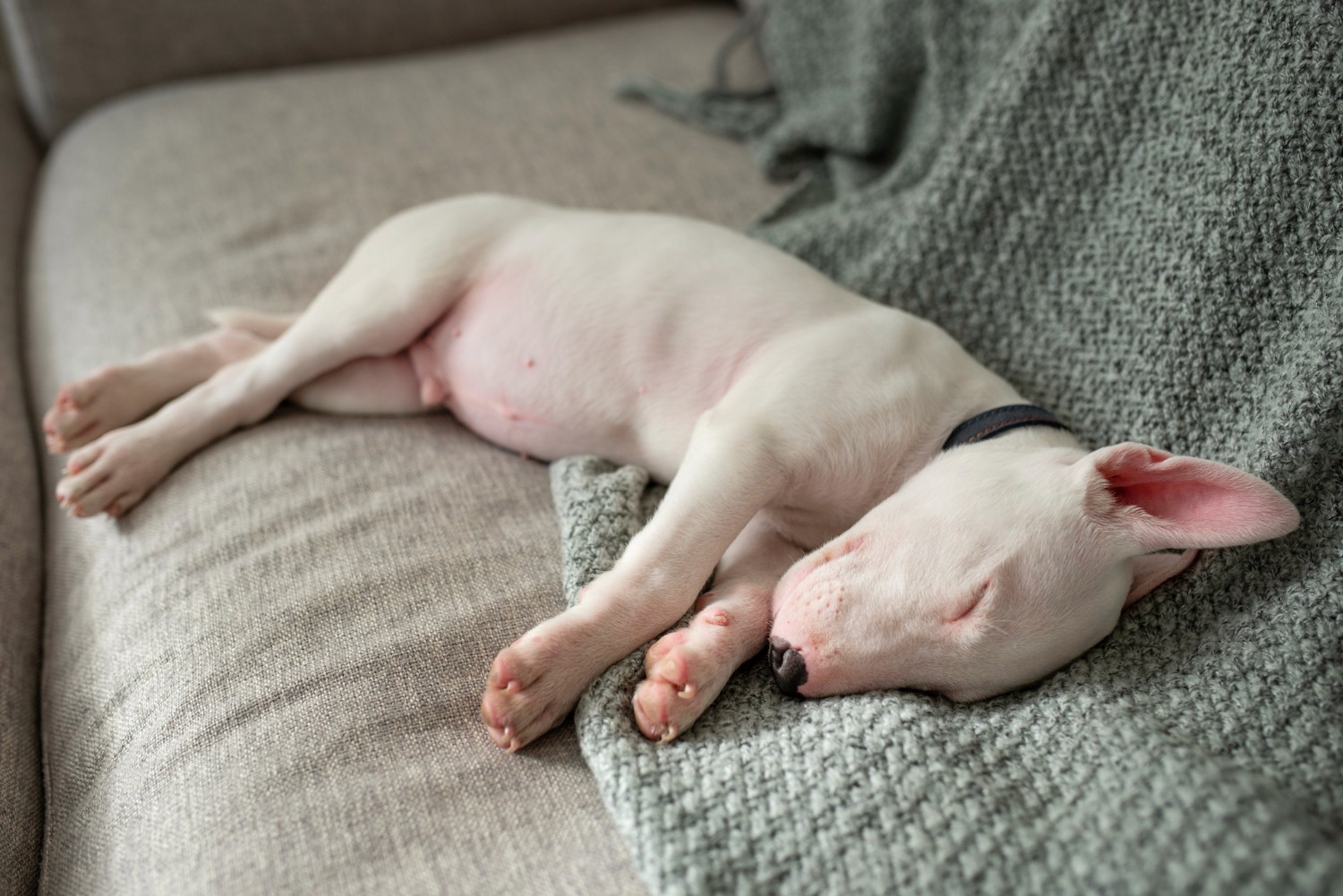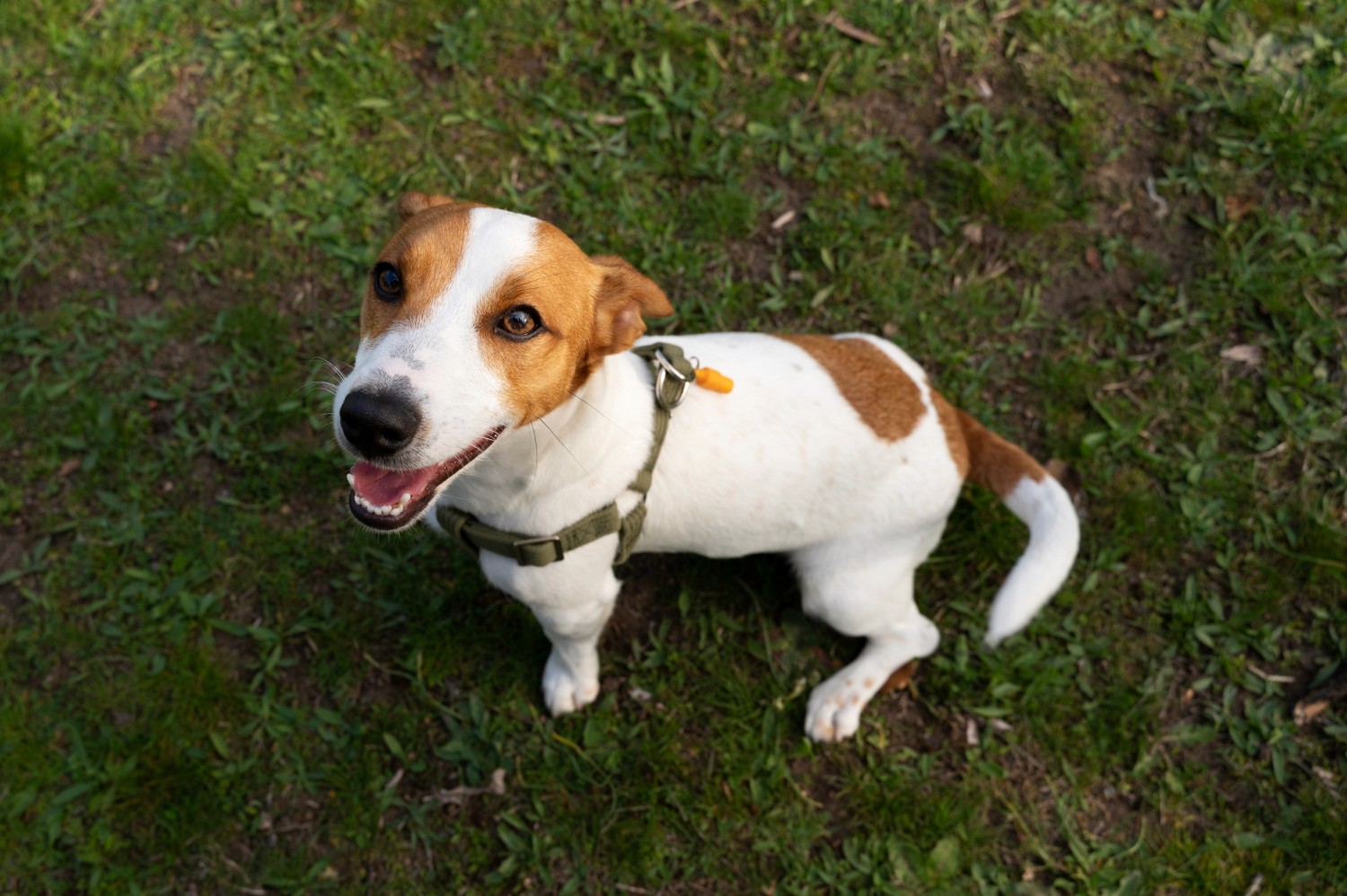Dogs
Aug 15, 2025
If you share your home with a dog, chances are you've found fur on your clothes, floors, and maybe even in your coffee! Dog shedding is completely normal, it's how dogs get rid of old or damaged hair. But it can get out of hand, especially when you’re living in a flat or villa with central AC blowing it around.
Shedding can be managed. You can’t stop it entirely, but you can take steps to control it, and that’s what we’re here to help with.
In this blog, we’ll show you how to reduce dog shedding with practical tips you can actually use. From choosing the right brush and food to spotting health issues early, we’ve got your back. We’ll also talk about which dog breeds shed more than others, and which ones might be easier to live with, fur-wise.
Why Do Dogs Shed
Dogs shed as a natural way to get rid of old, damaged, or extra hair. Just like people lose a few strands of hair every day, dogs also lose fur to make room for new, healthy growth. This is part of a normal cycle that helps keep their coat and skin in good condition.
The amount a dog sheds can depend on their breed, coat type, season, and overall health. Some dogs shed a little all year round, while others “blow their coat” during certain times of the year, especially in the spring and autumn. If you live in Dubai, the indoor air conditioning and heat can also affect your dog’s shedding pattern. It's completely normal, but there are ways to manage it, which we’ll explain in the next sections.
Understanding the Dog Shedding Cycle
To manage shedding properly, it helps to first understand how your dog’s hair grows and falls out. Shedding isn’t random, it follows a natural cycle. All dogs go through this process, though the length and intensity can differ based on their breed, age, and environment.
The 4 Phases of Hair Growth
A dog’s coat goes through four stages. Each phase plays a role in how much fur your dog keeps or sheds.
Anagen (Growth)
This is when your dog’s hair is actively growing. In some breeds, like poodles, this phase can last a long time, which is why they don’t shed as much.
Catagen (Transition)
During this short phase, hair stops growing. The hair follicles begin to shrink, preparing the strand to fall out.
Telogen (Rest)
In this stage, the hair simply stays in place. It’s not growing or falling out yet, but it’s waiting for the next step.
Exogen (Shedding)
This is when the hair finally falls out and new hair starts to grow in its place. This is the phase most noticeable to us, when we find fur on our clothes or floors.
Seasonal Shedding Patterns
Some dogs, especially those with double coats like Huskies or Golden Retrievers, shed more heavily in spring and autumn. This is their body’s way of preparing for temperature changes. In Dubai, where dogs often stay indoors with air conditioning, their cycle can be affected. Some may shed more steadily all year rather than just by season.

Breeds That Shed More vs. Less
Not all dogs shed the same. Some breeds drop fur every day, while others shed very little. Understanding your dog’s breed can help you prepare for how much cleaning or grooming you’ll need to do at home, especially if you live in a flat or villa in Dubai, where fur on furniture can build up quickly
Heavy Shedders
Some breeds are known for shedding a lot. They usually have double coats, which means they have a soft undercoat beneath a top layer of fur. These dogs often shed heavily during the spring and autumn months.
Common heavy shedders include:
Labrador Retrievers
German Shepherds
Siberian Huskies
Golden Retrievers
These breeds are loving and loyal, but their fur tends to end up everywhere, on clothes, sofas, and car seats.
Moderate Shedders
Moderate shedders drop fur regularly, but not in large amounts. You’ll still need to brush them and clean up, but it’s usually more manageable than with double-coated breeds.
Examples include:
Beagles
Corgis
Dalmatians
With proper grooming, their shedding can be kept under control.
House Dogs That Don’t Shed (Much)
If you prefer a cleaner home, house dogs that don’t shed much may be a better fit. These breeds have hair that grows longer and falls out less often, but that doesn’t mean they’re low maintenance.
Examples:
Poodles
Bichon Frise
Maltese
Shih Tzu
These dogs still need regular grooming, such as brushing and trimming, to keep their coat healthy and free from tangles. They may not leave much fur behind, but they do need time and care.
Common Health-Related Causes of Excessive Shedding
While shedding is normal in all dogs, sudden or heavy hair loss can sometimes be a sign of a health issue. If you’ve ever wondered what causes dogs to shed more than usual, it’s important to look beyond just their breed or the season. Sometimes, the cause could be linked to their diet, skin health, or overall wellbeing.
Nutritional Deficiencies
A poor diet is one of the most common causes of excessive shedding. Dogs need the right balance of protein, healthy fats, vitamins, and minerals to grow strong, healthy fur. If your dog isn’t getting enough Omega-3 fatty acids, for example, their coat can become dry, brittle, and prone to falling out. Low-quality food or sudden changes in diet can also lead to dull fur and more shedding.
Fleas, Mites, or Allergies
Skin problems can also lead to hair loss. Fleas, ticks, or mites can cause your dog to scratch or bite at their skin, leading to bald patches or infections. Flea allergy dermatitis, for instance, is a common reaction that causes red, itchy skin and fur loss, especially around the tail and belly. Environmental or food allergies may also lead to skin irritation and excessive shedding.
Stress, Hormones, or Underlying Disease
Dogs can shed more when they are stressed or unwell. Changes in the home, such as moving or loud noises, can cause anxiety and lead to shedding. Hormonal changes, such as those during pregnancy or after giving birth, can also affect the coat. Medical issues like thyroid disease, liver problems, or infections may also be to blame.

Proven Tips to Reduce Dog Shedding
While shedding is a normal part of a dog’s life, there are ways to manage it better. These simple but effective steps can help you reduce dog shedding and keep your pet’s coat healthier at the same time.
1. Brush Regularly the Right Way
Brushing helps remove loose hair before it ends up on your floor or sofa. It also spreads natural oils across your dog’s skin, which keeps their coat healthy. The type of brush matters, for short-haired dogs, a rubber curry brush or slicker brush works well. For long-haired or double-coated breeds, use an undercoat rake or a wire-pin brush. Aim to brush your dog at least a few times a week, or daily if they shed a lot.
2. Bathe with Deshedding Shampoos
Bathing helps loosen and wash away dead fur. Using a deshedding shampoo made for dogs can reduce shedding by cleaning the coat and calming the skin. Look for shampoos with natural ingredients like aloe vera or oatmeal. Avoid overbathing, as it can dry out the skin and make shedding worse. For most breeds, once or twice a month is enough.
3. Maintain a Healthy Diet
What your dog eats plays a big role in how much they shed. A diet rich in Omega-3 fatty acids, high-quality proteins, and essential vitamins helps support healthy skin and strong hair follicles. If you’re unsure about your dog’s food, check with your vet. In some cases, supplements can also help, especially if your dog’s coat is dry or dull.
4. Hydration Matters
Dogs need to drink enough water every day. If they don’t, their skin can become dry and flaky, which can lead to more shedding. Always make sure your dog has access to clean, fresh water, especially in Dubai’s hot climate where dehydration can happen quickly, even indoors.
5. Regular Vet Visits
If your dog is shedding more than usual, it’s best to get them checked by a vet. Sometimes, shedding is a sign of an underlying health problem, like a skin condition, allergy, or hormone imbalance. Regular check-ups help catch these issues early and keep your dog’s coat, and overall health in good shape.

6. Grooming Appointments
Groomers can use deshedding tools, trim excess fur, and spot early signs of skin problems. Some dogs may also benefit from specialised treatments like deshedding baths or blowouts. Even for low-shedding breeds like Poodles or Maltese, regular grooming helps prevent matting and keeps their coat healthy.
7. Flea and Parasite Control
Fleas, ticks, and mites can cause itching, irritation, and fur loss. Dogs may scratch or bite at their skin, which can lead to bald spots and excessive shedding. Prevent this by using vet-approved flea and parasite treatments regularly. In Dubai, where the warm weather can support flea activity year-round, staying on top of parasite control is especially important.
8. Create a Low-Stress Environment
Stress and anxiety can cause dogs to shed more than usual. Loud noises, changes in routine, or being left alone for long periods may trigger hair loss. Try to create a calm home environment with predictable routines, gentle handling, and regular exercise. Enrichment toys, walks, and quality time can help reduce stress and support a healthier coat.
9. Clean Your Home Strategically
Even with the best care, some fur will still end up in your home. Regularly vacuum your floors, carpets, and furniture, ideally using a vacuum made for pet hair. Wash your dog’s bedding weekly and use furniture covers where possible. Lint rollers and air purifiers can also help keep your home cleaner and more comfortable, especially if you or your family members have allergies.
10. Use Pet Wipes Between Baths
Bathing too often can dry out your dog’s skin, but pet wipes are a great in-between option. Gentle, dog-safe wipes help remove loose fur, dirt, and allergens without needing water. They’re especially handy after walks or trips to the park. Look for wipes with natural ingredients that soothe the skin and support coat health, a quick wipe down can go a long way in reducing daily shedding.

Frequently Asked Questions
Can I completely stop my dog from shedding?
No, you can’t stop shedding entirely. Shedding is a natural process for all dogs, even those considered “low-shedding”. What you can do is manage it with regular brushing, a proper diet, and the right grooming routine. The goal is to reduce it so it’s easier to live with.
Which type of brush helps most with shedding?
It depends on your dog’s coat.
For short-haired dogs: rubber curry brushes or bristle brushes work well.
For long-haired or double-coated dogs: use a slicker brush or undercoat rake to remove loose fur.
Using the right brush for your dog’s coat type makes grooming more effective and prevents fur from building up in your home.
Can food help reduce how much my dog sheds?
Yes, it can. Dogs that eat a balanced diet with Omega-3 fatty acids, protein, and key vitamins often have healthier skin and coats. This can lead to less shedding. Poor-quality food can lead to dry skin and brittle hair. If you’re unsure what to feed, ask your vet for a recommendation.
How do I know if my dog is shedding too much?
Watch for signs like:
Bald spots
Red or irritated skin
Scratching more than usual
Sudden increase in fur around the home
If shedding doesn’t seem normal for your dog or if it happens suddenly, it’s best to speak with your vet. They can check for allergies, skin issues, or other problems.
Is shedding worse in Dubai because of the weather?
In some cases, yes. The hot climate and constant air conditioning in many homes can affect your dog’s skin. Dogs that stay indoors a lot may shed more steadily instead of seasonally. Dry air can also lead to dry skin, which makes shedding worse. Keeping your dog hydrated and well-groomed can help balance this out.





